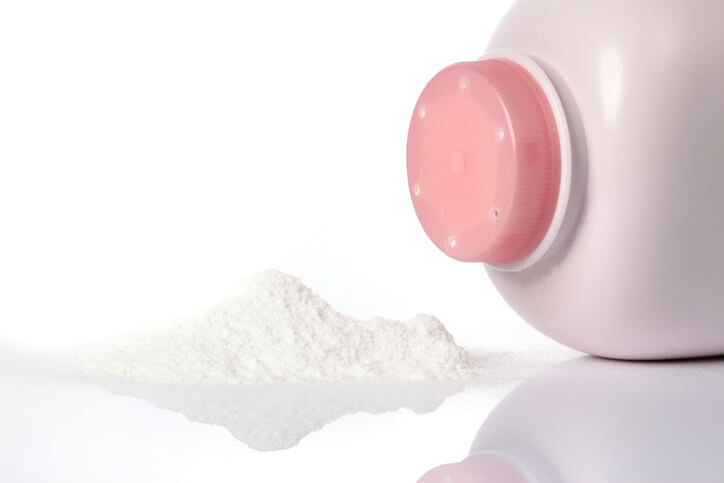Across the nation, thousands of women are suing drugmaker Johnson & Johnson (J&J), alleging that their talcum powder caused ovarian cancer. J&J has repeatedly dismissed the allegation that their best-selling talcum powder contains asbestos. After a series of studies have linked talcum powder to ovarian cancer, it’s easy to see why. An internal memo even went so far as to claim that asbestos “has never been found and it never will” (in their products). But recent evidence in the talc trial reveals that J&J knew about tremolite asbestos risks. And that they have known about the asbestos risks since 1974.
This cancer-causing substance may be the reason so many women develop ovarian cancer after consistent use. The new evidence may help propel existing J&J ovarian cancer cases forward.
Related: Your Top Injury Claim FAQs, Answered
Talc Possibly Contaminated By Asbestos
In 1973, the Federal Drug Administration required all talcum powders to be asbestos-free. Asbestos exposure has proven to cause consumers adverse health effects, such as cancer and breathing difficulties. Asbestos and talc develop in close proximity to one another near the Earth’s surface. As a result, asbestos contamination is always a risk.
Despite the contamination possibility, J&J adamantly refuted this claim. But recent evidence in a document that was unsealed on September 6, 2017, states that J&J has known for decades that its talc products contain asbestos fibers. It indicates that in May 1974, an official at J&J’s Windsor mine in Vermont, made a statement about asbestos. The official recommended “the use of citric acid in the depression of chrysotile asbestos” from talc extracted at the site. This came just one year after the FDA’s order that all talcum powder be asbestos-free.
Out of concern that asbestos contaminated the product, a J&J employee stepped forward. In a report, he suggested that the company begin using cornstarch rather than talc in their consumer products. Cornstarch has natural properties that make it safe for general use and more importantly, it has no links to cancer. In addition, the unsealed documents show that J&J stopped the distribution of a booklet. The booklet revealed the discovery of asbestos in the talc J&J bought from an Italian mine.
The Dangers of Talc
Dr. Barry Castleman told The Chicago Tribune that even trace amounts of asbestos in talc pose a cancer risk. “It is a problem even if it’s found in small amounts in talc, especially because it’s used by children and women.” Apparently, Castleman even wrote to J&J in 1972 about his concerns and in his words, “They responded that there was no asbestos in their talc.”
Nearly 20 years after the FDA’s 1973 order, a 1992 study revealed talcum powder’s risks. It found that women who applied talcum powder in the genital region had an increased risk of developing ovarian cancer. Another 2003 study found that regularly applying talcum powder increased the risk of ovarian cancer by 33%.
What You Can Do
If you are suffering from cancer due to frequent or long-term talc use, you may be eligible for compensation. To see if your own case may qualify for compensation, fill out your free Talcum Powder claim evaluation form now. Once you’ve submitted your information, an experienced lawyer will contact you to discuss your case.
Related: I Filled Out Your Free Evaluation Form. Now What Happens?
Mandy Voisin
Mandy Voisin is a freelance writer, blogger, and author of Girls of the Ocean and Star of Deliverance. As an accomplished content marketing consultant, mom of four and doctor's wife, Mandy has written hundreds of articles about dangerous drugs and medical devices, medical issues that impact disabled Americans, veterans' healthcare and workers' compensation issues since 2016.

